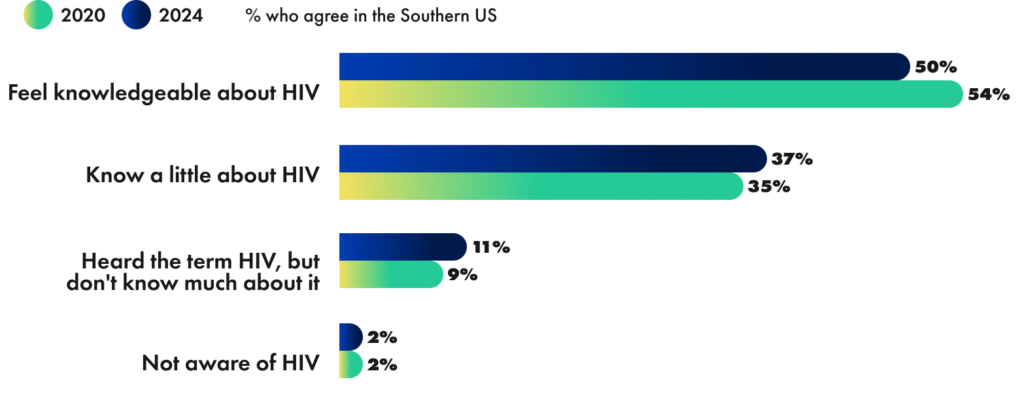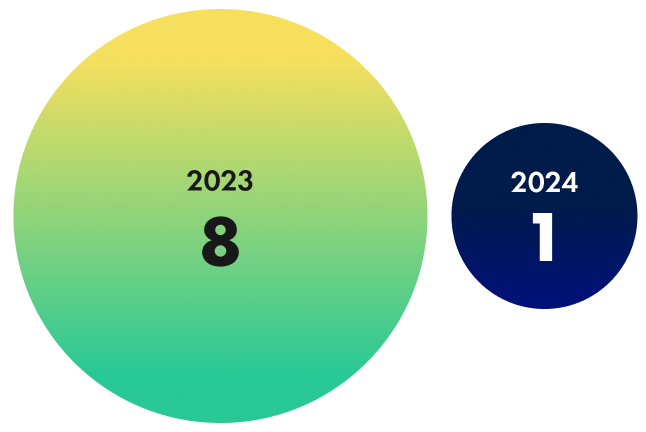Contact: press@glaad.org
Join GLAAD and take action for acceptance.
Trending
- We All Could Use Some Queer Joy! Be a Part of The Skin Deep + GLAAD’s New Collab
- Facts and Action for Banned Books Week
- Write It Out! Launches Annual Campaign to Uplift People Living with HIV Through Playwriting
- GLAAD Gaming Announces New Queer Emerging Developers Program
- Finding Yourself Begins With Celebrating Others’ Differences
- Must-See LGBTQ TV: October Premieres and Returns!
- Fact Sheet: Landmark Supreme Court Case Regarding Protections Against So-Called Conversion “Therapy” for Youth
- Lessons Learned: On Organizing for Inclusive and Welcoming School Systems
GLAAD Commemorates World AIDS Day 2024
GLAAD MARKS WORLD AIDS DAY 2024 WITH REALITY CHECKS ON THE STATE OF HIV STIGMA AND REPRESENTATION, ELEVATES THE LACK OF HIV-RELATED STORIES AND CHARACTERS ON-SCREEN, JOINS WITH PrEP4All IN CAMPAIGN TO CURTAIL $700M IN PROPOSED CUTS TO HIV FUNDING
New York, New York – Wednesday, November 27, 2024 – GLAAD, the world’s largest lesbian, gay, bisexual, transgender, and queer (LGBTQ) media advocacy organization, today announced it will mark World AIDS Day this year by sharing the results of its 5th annual State of HIV Stigma Report, providing new resources to its World AIDS Day and HIV Global Resource Hub, joining PrEP4All in a campaign to curtail proposed federal cuts to HIV funding, and announced programs and activations around World AIDS Day this year.
World AIDS Day has been observed on December 1 every year since 1988 and serves as a reminder of the global struggle to end HIV-related stigma. It’s an opportunity to honor those we have lost, and is also a rallying cry to commit to working toward a day when HIV is no longer a public health threat. Those looking to show support for those living with HIV/AIDS can wear the signature red ribbon on December 1.
GLAAD’s refreshed World AIDS Day and HIV Global Resource Hub, provides resources, content and guidelines for journalists, creators and the general public, on fairly and accurately sharing stories related to HIV and people living with HIV (PLWHIV).

“On this 36th observance of World AIDS Day, we must all remain steadfast in eradicating HIV stigma and achieving a future without HIV. As we remember the millions of lives lost around the world; we also reaffirm the reality that we have all the tools necessary to end this epidemic: game-changing HIV treatment and prevention methods like PrEP, which protects against contracting HIV. Despite advances in treatment and prevention, GLAAD’s 2024 State of HIV Stigma showed that fewer Americans report knowing the fact that people living with HIV today, when on effective treatment, can live long and healthy lives and cannot transmit HIV. Meaningful representation of HIV facts and people living with HIV is sorely needed in news and entertainment to increase education and decrease stigma.”
THE STATE OF HIV STIGMA
In partnership with Gilead Sciences and the Gilead COMPASS Initiative, GLAAD’s 2024 State of HIV Stigma Report is a national survey among U.S. adults which measures knowledge, perceptions and attitudes among non-LGBTQ Americans about HIV. The report also showed continued progress in important areas of visibility and awareness, including comfortability engaging with people living with HIV and knowledge that medications exist to prevent HIV and treat HIV to the point of an undetectable and, therefore, untransmittable HIV status (U=U).

Key Findings:
- Knowledge of HIV remains stable in the U.S. and in the Southern U.S. over the last five years, with nearly 90% of Americans reporting they know at least a little about HIV, with half of Americans feeling knowledgeable.
- Gen Z continues to be among the least knowledgeable generations about HIV.
- Only 37% of Gen Z adults are knowledgeable about HIV, on par with five years ago.
- The following areas have seen declines over the last five years of GLAAD’s tracking:
- We’ve seen a significant decrease in the belief that everyone should get tested for HIV, from 77% in 2020 to 67% in 2024. This decline is seen across all regions of the country.
- And the survey found a significant decrease in knowledge of the fact that people living with HIV, when on effective treatment, can live long and healthy lives, from 90% in 2020 to 85% in 2024. The Southern U.S. is the only region to see a significant decline here as well.
- GLAAD’s Where We Are on TV study showed only one LGBTQ character in primetime scripted broadcast, cable or streaming programming living with HIV in the most recent television season, and that character will not appear again this season.
- There has also been a significant decrease year over year in Americans seeing people living with HIV in TV or film, from 39% in 2023 to 35% in 2024.
- Seeing stories of people living with HIV increases reported comfortability with people living with HIV in various scenarios by up to +15%.
See, Share and Download the Report HERE
Social Graphics and Toolkit HERE
THE LOSS OF STORIES ABOUT HIV: A NEW SILENCE

Television and film are the largest platforms and vehicles for seeing stories about people living with HIV over other forms of entertainment and media like advertisements, digital/social media, and print.
Across television, GLAAD’s 2023-2024 Where We Are in TV Report, which assesses and analyzes the number of LGBTQ regular and recurring characters across television networks, revealed that of the 454 GBTQ characters found across broadcast, cable and streaming scripted television from the 23-24 TV season, only one character (0.2%, on Showtime’s Fellow Travelers) was counted as living with HIV.
In film, GLAAD’s 2024 Studio Responsibility Index, which tracks the quantity, quality, and diversity of LGBTQ characters in theatrical film slates from major studios, found out of 256 films included studied, no characters were portrayed as living with HIV.
LGBTQ stories told through TV and film have a powerful and inextricable link to culture-change, key to breaking stigma and stereotypes around HIV and people living with undetectable HIV. Despite progress in LGBTQ representation in film and TV, Hollywood is missing major opportunities and evading a responsibility to represent accurate and fair stories about HIV and people living with HIV, to their audiences.
GLAAD JOINS PrEP4All’S CAMPAIGN TO #SAVEHIVFUNDING
In partnership with PrEP4All, GLAAD has joined together with 100+ advocacy and nonprofit organizations to petition the U.S. Congress to reject $700M of proposed cuts to HIV funding.
According to PrEP4All, U.S. funding has resulted in treatment access for at least half a million Americans living with HIV who receive support annually. Domestic HIV prevention efforts have accelerated with the establishment of the first National HIV/AIDS Strategy in 2010 and the announcement of the Ending the HIV Epidemic initiative in 2019, resulting in a 16% reduction in new HIV infections since 2017 in America’s most highly affected jurisdictions. If HIV funding is maintained and expanded, the epidemic can be further kept under control for all American communities.
In contrast, a half a billion loss to domestic funding would put all existing progress at risk. Every new HIV infection in the US creates $501,000 in lifetime healthcare costs, a figure many advocates believe is a huge underestimation. An increase of just 2,000 new cases in the US will add billions to our national debt and obliterate any savings House appropriators seek to achieve. Five thousand Americans still die from AIDS-related causes each year. Those numbers will grow if funding for key support services does not continue.
Through the #SaveHIVFunding campaign, the coalition of organizations is gathering support from the community, advocates, allies and leaders in Congress to oppose these cuts, advocate for robust FY25 funding, and urge Congress to honor the bipartisan commitment to end the HIV epidemic in the U.S. by 2030. The movement to end the HIV epidemic cannot survive such drastic cuts, and HIV historically has been a bipartisan issue, including the EHE initiative which was launched under the Trump Administration in 2019.
Learn more and sign the petition HERE.
GLAAD REPORTING GUIDES AND RESOURCES
GLAAD was founded in 1985, by journalists and writers determined to hold the media accountable for grossly defamatory and inaccurate media coverage of HIV and HIV patients. Today, remarkable scientific progress has made HIV a preventable, treatable, and when treated properly, untransmittable condition. As stigma continues to fuel the epidemic of HIV, GLAAD provides resources and guidelines to journalists and creators to cultivate fair and accurate reporting and sharing of experiences related to HIV, treatment & care, and of people living with undetectable HIV.
- GLAAD’s World AIDS Day Resource Hub aggregates all of GLAAD’s HIV resources and spotlight’s HIV.gov’s HIV testing and health services locator which includes resources around mail-in self testing, STI testing and treatment, Mpox vaccines and mental health.
- GLAAD has also published a Fact-Sheet on federal efforts to end HIV/AIDS
- GLAAD’s Southern Story Bank features profiles of people living with HIV and advocates elevating facts about HIV and equitable health care for LGBTQ people in the U.S. South.
ADDITIONAL HIV FAST FACTS
Facts about HIV:
- People living with HIV today, when on effective treatment, lead long and healthy lives and cannot transmit HIV. Treating HIV can suppress the virus to the point it is no longer detected. When HIV is undetected, it is untransmittable, the key message of the U=U campaign.
- There were 31, 800 estimated new HIV infections in 2022 and nearly 40% of new HIV infections are transmitted by people who don’t know they have the virus. (CDC)
- There was a 12% decrease in new HIV infections from 2018 (36,200) to 2022 (31,800). The decline was driven by a 30% decrease among young people aged 13-24 years. Increases in pre-exposure prophylaxis (PrEP) prescriptions, viral suppression, and HIV testing likely contributed to the decline. (CDC)
- Together, Black/African Americans and Hispanic/Latino people made up more than half (70%) of estimated new HIV infections in 2022. (CDC)
- People who acquired HIV through heterosexual contact accounted for 22% (7,000) of the 31,800 estimated new HIV infections in 2022. (CDC)
- Medications like PrEP protect people who do not have HIV from contracting HIV. The CDC states that PrEP reduces the risk of getting HIV from sex by about 99% when taken as prescribed.
- HIV diagnoses are not evenly distributed across states and regions. The highest rates of new diagnoses continue to occur in the South.
About GLAAD:
GLAAD rewrites the script for LGBTQ acceptance. As a dynamic media force, GLAAD tackles tough issues to shape the narrative and provoke dialogue that leads to cultural change. GLAAD protects all that has been accomplished and creates a world where everyone can live the life they love. For more information, please visit www.glaad.org or connect @GLAAD on social media.
Add A Comment
Share this
Join GLAAD and take action for acceptance.
ALERT Desk Incident Reporting
Our Picks
Topics
Don't Miss
This resource was created as a collaboration between GLAAD, The Trevor Project, and the Movement…












